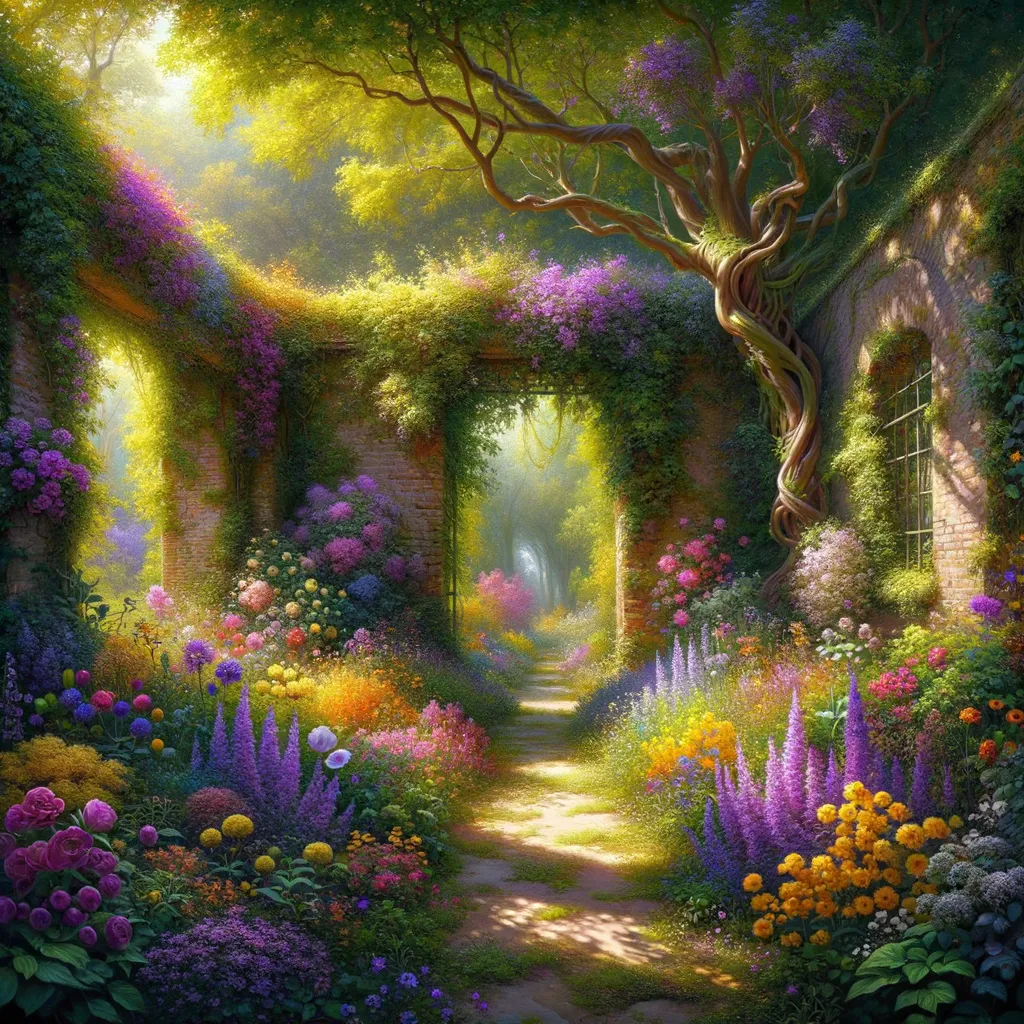Beyond the Garden: A Journey of Growth and Discovery
At the edge of a forgotten garden, a sanctuary of childhood dreams, the air was thick with the scent of blooming wildflowers and damp earth, evoking memories of safety and solace. Within its crumbling brick walls, time seemed to bend, cradling the joys and fears of youth while simultaneously stifling the yearning for adventure. As seasons changed, so did the garden’s essence, reflecting the internal struggles that mirrored the starkness of winter and the vibrancy of summer. One fateful day, curiosity ignited a bold step beyond its confines, revealing a world bursting with color, chaos, and stories waiting to intertwine with my own. In this dance between comfort and exploration, I discovered that the walls that once defined me could also be dismantled, transforming the garden into a cherished memory—a symbol of growth and self-discovery, urging me to embrace both the familiar and the unknown.
In the memory of July 29, 2002, I found myself standing at the edge of an overgrown garden, a small sanctuary that had been my childhood refuge. The air was thick with the scent of damp earth and blooming wildflowers, each petal a testament to the resilience of life thriving in an unkempt space. This garden, a forgotten corner of my neighborhood, was more than just a patch of greenery; it was my comfort zone, a physical manifestation of safety and familiarity. Its crumbling brick walls, draped in ivy, created a cocoon where the outside world felt distant, almost irrelevant.
Within those walls, time seemed to bend. Sunlight filtered through the leaves, casting playful shadows on the ground, while the whispers of the wind played a melody that spoke of dreams yet to be realized. Here, I had built a universe in which the mundane worries of life—school, friendships, and parental expectations—were but faint echoes. The garden was both a haven and a prison, offering solace while simultaneously stifling my desire for adventure. It was a curious paradox, one that I would not recognize until much later in life.
As the seasons changed, so did my relationship with this space. In the summer, it buzzed with life, the air vibrant with the hum of bees and laughter from the nearby park. Autumn painted the leaves in fiery hues, each fallen leaf a reminder of the fleeting nature of time. But winter brought a quiet desolation, a starkness that mirrored my own internal struggles. I would bundle myself in layers of warmth, retreating into the garden, yet feeling trapped within its icy embrace. It was during these moments that I began to understand the duality of comfort zones—how they can cradle you while simultaneously constraining your growth.
The walls of my garden were not just physical barriers; they represented the invisible boundaries I had constructed around my life. They kept out the chaos of the world, but they also kept in my fears and insecurities. I would often sit beneath the gnarled branches of an old oak tree, contemplating the vastness of everything I hadn’t experienced. While the garden was a canvas for my imagination, it also became a cage for my aspirations. The vivid dreams of exploration and discovery began to fade, overshadowed by the comforting predictability of my surroundings.
One fateful day, spurred by a whisper of curiosity, I ventured beyond the garden’s confines. As I stepped into the unknown, the world unfolded in ways I had never anticipated. The sights, sounds, and scents were intoxicating. I discovered that life beyond my sanctuary was brimming with color and chaos, filled with people whose stories intertwined with my own. Each interaction was a thread woven into the tapestry of my existence, expanding my perspective in ways my garden never could.
Yet, the allure of my comfort zone remained. There were moments when I longed to retreat, to feel the familiar embrace of the garden’s walls after encounters that left me feeling vulnerable. I grappled with the tension of wanting to explore while yearning for the safety of what I knew. It became evident that my comfort zone, while nurturing, was a double-edged sword, offering refuge at the cost of stagnation.
As years rolled on, the garden transformed. New plants took root, and the walls, once so defining, began to crumble, letting in light and new possibilities. I realized that comfort zones are not meant to be permanent; they are fluid, evolving spaces that can expand to include new experiences. It dawned on me that stepping outside my garden wasn’t about abandoning comfort; it was about redefining it.
With each exploration, I found pieces of myself that had been lost or buried beneath layers of familiarity. I learned to embrace discomfort as a companion on the journey, recognizing it as a catalyst for growth. The garden remained a part of me, a cherished memory, but it no longer held me captive. Instead, it became a symbol of my journey toward self-discovery, a reminder that the walls we build can also be dismantled.
Reflecting on that July day, I understand now that comfort zones are both necessary and limiting. They shape our identities while simultaneously challenging us to break free. The world outside my garden offered a kaleidoscope of experiences that enriched my life, yet the lessons learned within those ivy-clad walls remain etched in my heart.
As I ponder the complexities of comfort and growth, I am left with a lingering question: how do we honor the spaces that comfort us while daring to step beyond their boundaries in pursuit of a fuller, richer existence?
In the delicate dance between comfort and adventure, the walls that cradle dreams can also confine them, urging a journey beyond familiar borders to uncover the vibrant tapestry of existence.



